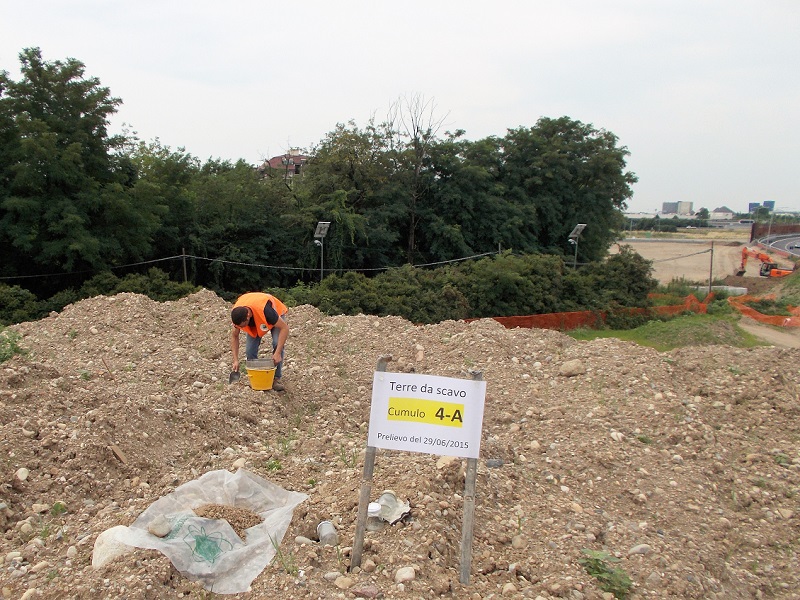The management of excavated earth and rocks from construction and demolition, is one of the most delicate issues in terms of national regulations.
In particular, the possibility of managing these materials as by-products and not as waste, has been the subject of numerous regulatory interventions in the last decade, up to the entry into force of the new simplified regulation of the management of excavated earth and rocks (22 agosto 2017), included in Pres. Decree No 120 of 13 June 2017, which repealed all the previous regulations (Min. Decree No 161/2012; Article 184-bis, par. 2bis of the Consolidated Law on the Environment; and Articles 41, paragraph 2 and 41-bis of Leg. Decree No 2013).
Basically, this Decree is today the only regulatory instrument applicable to allow the use, as by-products, of excavated materials (excavated earth and rocks and landfill) from small and large construction sites, including those intended for the establishment or maintenance of networks and infrastructures.
The legislation sets out the criteria for qualifying earth and rocks as by-products by including, in addition to proof of not exceeding the threshold concentrations of contaminants (CSC), two important innovations:
- the methodology for the quantification of anthropogenic materials of anthropogenic (must not exceed the maximum of 20%), shown in Annex 10;
- the criteria for assimilating landfill materials to excavated earth and rocks (compliance with the leaching test, according to the methods in Annex 3 to the Min. Decree of 5 February 1998, with the exclusion of the asbestos parameter and comparison with the legal limits set for groundwater).
The legislation also defines the sampling procedures to be followed for environmental characterization in plans for the use of excavated earth and rocks in large construction sites.
What are the changes, therefore, in the reuse of excavated materials?
Whilst before, the operators and control bodies were free to evaluate the environmental quality of the land, the current regulations eliminate the discretionary nature of evaluation. To be qualified as by-products, excavated earth and rocks, for all construction sites,must meet the criteria established by Art. 184-bis of Leg. Decree No 152/2006, compliance with which is assessed via the procedures established by Art. 4 of the new Regulation: these requirements are certified and proven after performing chemical-physical characterization as described in Annex 4, therefore by means of laboratory analysis.
It should be noted that the producer must provide proof that the threshold concentrations referred to in columns A and B, Table 1, Annex 5, Title V, of Part IV of Leg. Decree No 152 of 3 April 2006 are not exceeded.
In particular, Annex 4 shows the characteristics of the soil samples to be subjected to chemical laboratory analysis and the criteria for defining the search analytes, establishing a minimum analytical set to be considered, shown in Table 4.1, which includes the determination of following parameters: Arsenic, Cadmium, Cobalt, Nickel, Lead, Copper, Zinc, Mercury, Hydrocarbons C>12, total Chromium, Chromium VI, Asbestos, BTEX, IPA. . BTEX and PAH are analysed in the event that the excavation area is located 20 m away from major road infrastructures and built up areas that may have affected the characteristics of the site via the deposition of atmospheric emissions.
With regard to the methods for verifying environmental requirements, if there is evidence of anthropogenic contamination including the oversize (for example, asbestos), the analysis is performed on the entire sample, including the fraction of particle size greater than 2 cm, and the concentration refers to the same whole sample.
In the case of excavated earth and rocks from excavation in rock mass, for the purpose of verifying compliance with the environmental requirements referred to in Article 4 of the Regulation in question, the environmental characterization is performed after reducing the entire sample to a very fine powder.
If reuse in the same site is foreseen in a project subject to EIA, the operator must prepare a preliminary plan for use that incorporates the environmental impact study. This plan must be incorporated with the results of the sampling (to be submitted to the authorities before the start of the works) and must show the volumes to be excavated and reused, location and duration of deposits, final location of excavated earth and rocks.
Furthermore, a series of activities classified as “normal industrial practices”, can be carried out on excavated earth and rocks, which make their reuse more effective and which are clearly specified in Pres. Decree 120/17. In this case, the earth may contain other materials (without percentage limits, except for fillings). such as: concrete, bentonite, PVC, fibreglass, cement mixtures and additives for mechanized excavation, provided that the concentrations of pollutants fall within the limits set out in columns A and B, Table 1, Annex 5 of Leg. Decree 152/06.
These operations can only be carried out after proving that the material is a by-product and not waste, otherwise the activity could be unlawful.
The experience gained by Tecno Piemonte Spa, in the area of Excavated Earth and Rocks, faced also with very complex regulations, underlines the fundamental role of the environmental analysis laboratory in the technical and scientific support of companies planning and implementing such works.
The highly qualified technicians in the environment laboratory at Tecno Piemonte Spa, can prepare sampling plans and perform the subsequent analytical characterization of excavated earth and rocks.








